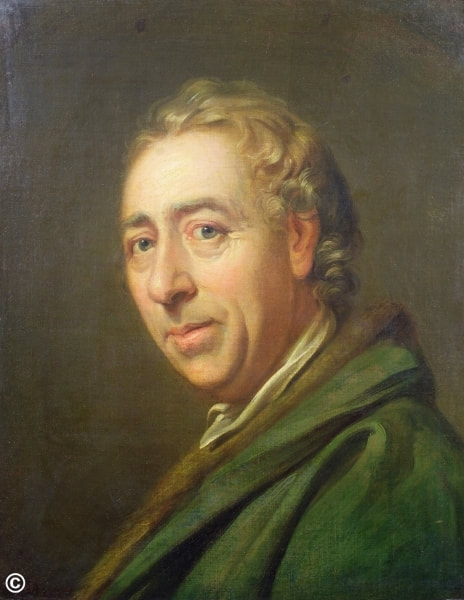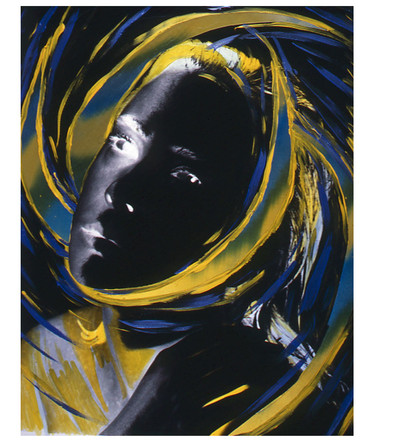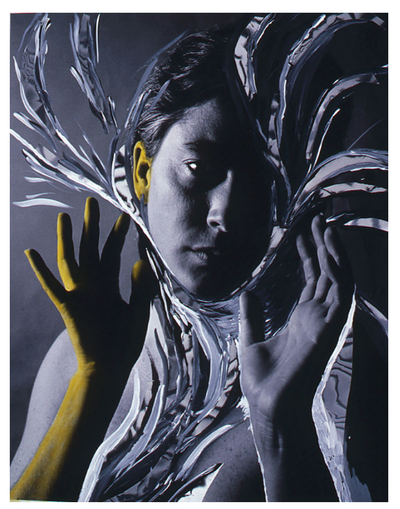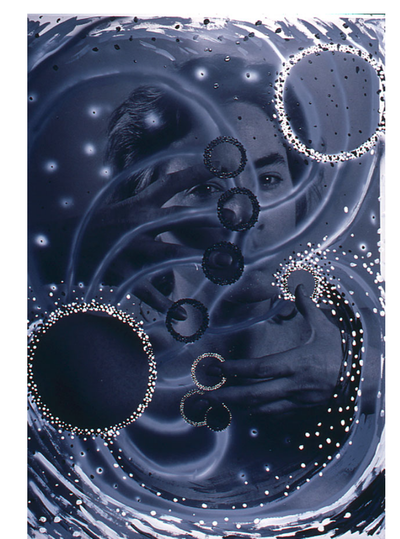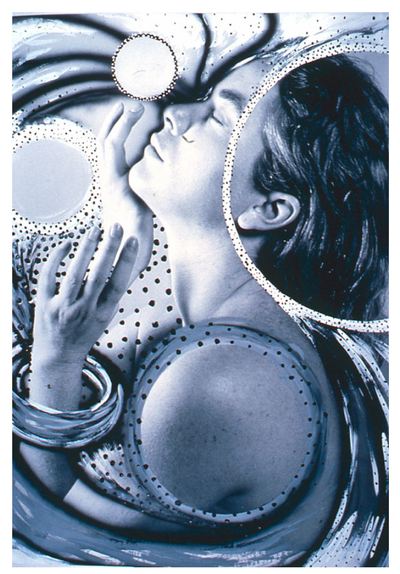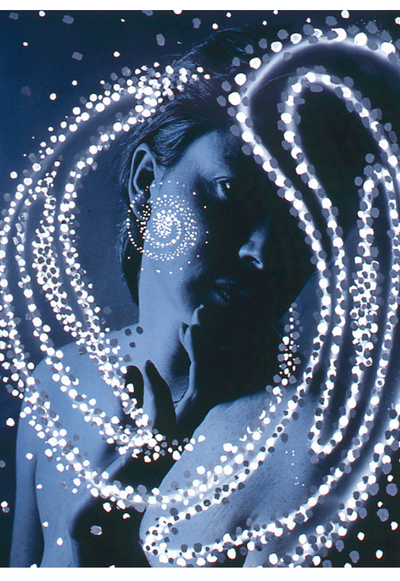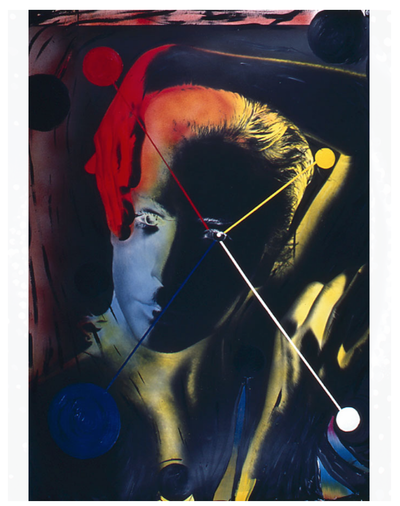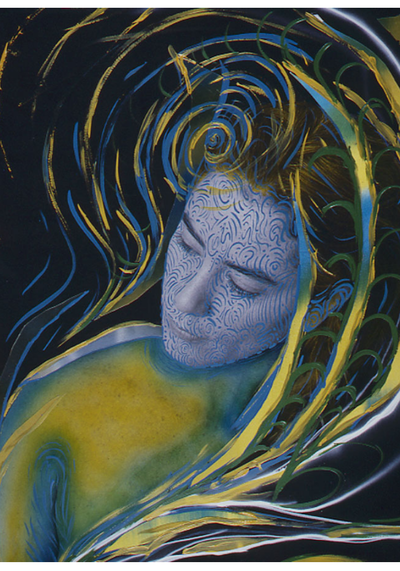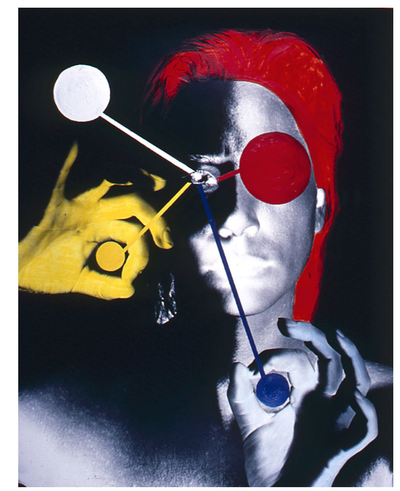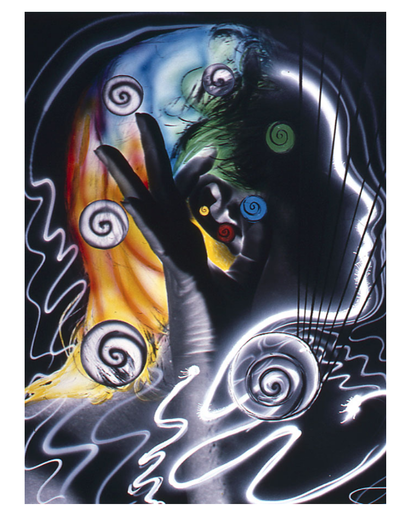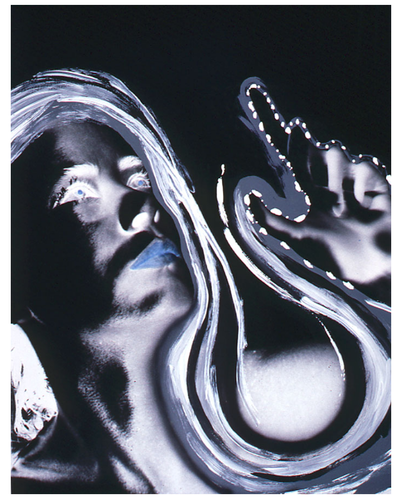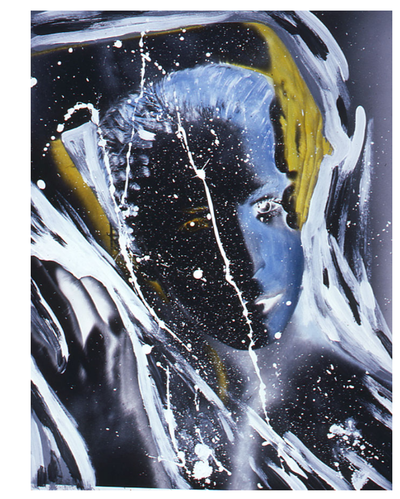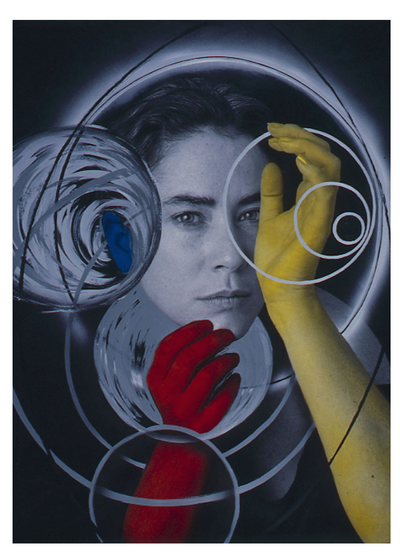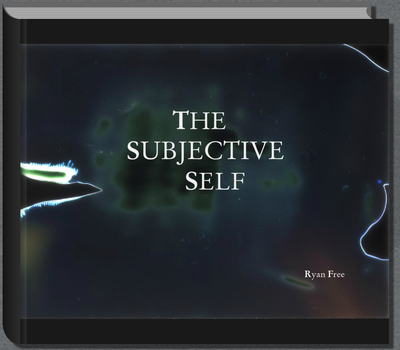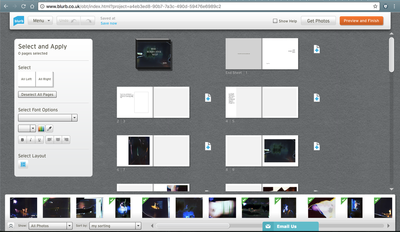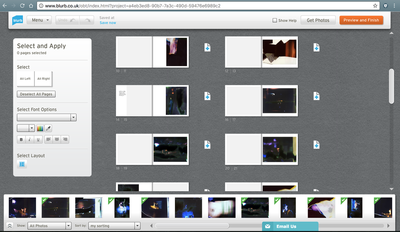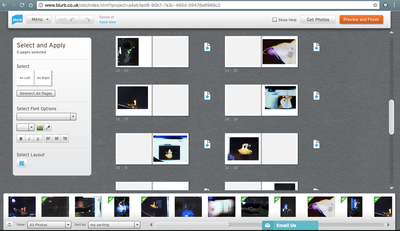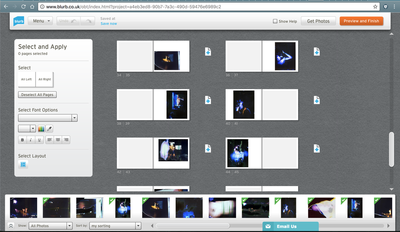|
http://karenknorr.com/writings/the-grapes-are-sour-anyway/ The Grapes Are Sour Anyway!Author: Daniel Campbell Blight Word count: 1327 http://karenknorr.com/writings/the-photographic-practice-of-karen-knorr/ The Photographic Practice of Karen Knorr Author: Kathy Kubicki Word count: 3165 The Virtues and the Delights: Reinventing HistoryAuthor: Karen Knorr
Word count: 3169 http://karenknorr.com/writings/the-virtues-and-the-delights-reinventing-history/ The landscape is always changing, it is current and relevant. Environmentally, socially and existentially. The ways in which we perceive 'Landscape' change within the confines of cultural language. I want to explore the places I am familiar, to map out memory and encode meaning through suggesting ways of seeing, by the process of framing and ordering the world a certain way, out of the infinite possible ways of seeing that there are in any given moment. These images will be documents of place and time as well as allegorical moments, a poetic colouring of everyday experience. Picking up on human intervention and our involvement in managing the British landscape, along side the urban-historic Landscape in High Wycombe. They will work in series in terms of, exposure, camera height, composition and subject, paper printed on and quality input/output.
The Thames Valley is certainly a naturally aesthetic place, rolling hills and beautiful estates of rare chalky meadows that overlook the plaines of Oxfordshire and beyond to the west and well the chaos of London to the east. Situated 29miles west,north,west of the capital of our country, High Wycombe was historically known as a a place to stop off whilst travelling to London or back. Wycombe had many inn's for people, looking on 1840 maps of the area from 'DigiMap'. This place en route London was known for market trading and drinking, But there was also the terraces that most people lived in. The residents of High Wycombe during the early 1800's were mostly workers of the many near by furniture production factories, supplying the famous Windsor chair to her majesty and many many other known designs and names. This town supplied hundreds of villages and towns with their finely crafted furniture for quite some time. The original designs for the houses and factories show terrace housing in between inns and furniture factories. Monuments stand on top of many hills and Roman roads define borders and territories associated in Wycombe, the districts of Wycombe are broken up into; Micklefield I intend to research the topographic of the Urban Landscape in my home town of High Wycombe, Buckinghamshire. I intend to investigate the places I am familiar in an historical context, to find new materials that enhance -or unseat- previous understandings of place and circumstance. I will be using dated maps from the early 1800's to not only see how the town was designed around the industrial era but to also see how it has changed today and what remains on the land to represent these moments in history that shaped our landscape but also our lives today. I will be creating 'straight documentary' photographs using black and white film to pick up on the historical side to the project, but to also create physical documents on print to the largest and highest quality I am capable in the darkroom. I intend one image to be printed in the darkroom at 16"x20" on fibre paper, to pristine quality. This image will be used to exhibit in the Garden Gallery, Gloucestershire. I will select and print the others smaller to add to a portfolio. These images will be documents of place and time as well as allegorical moments, a poetic colouring of everyday experience. Picking up on human intervention and our involvement in managing the British landscape, along side the urban-historic Landscape in center High Wycombe. They will work in series in terms of, exposure, camera height, composition and subject, paper printed on and quality input/output.
"England's Greatest Gardener"Known as one of the first Landscape Architects, Brown designed and worked on many very famous grounds around Britain. He was a master of water technology, directing and shaping the lakes and rivers to excentuate the shape of the land, using the border of the lake to show the land. Brown worked with almost every county in England, traveling by horse and carriage travelling through the landscape he could see the land quite intimately. He was known in his days, as a man who was fizzing with ideas, someone who has travelled and has a desire to expand and to re image the landscape of towns or estates. He would have been seen as quite famous, he stood out to the wealthy with his designs and creations. Brown set bridges and buildings into the landscape as a jeweller would set valuable stone into jewellery. Precise and thought out, he was a calculated man. He would choose every tree and plant in the grounds, and design the space for them, not just so the space looks amazing but so the whole image of the landscape is transformed into something more powerful and something very British.
A visionary vandal who colonised the land. ‘Capability’ Brown is best remembered for landscape on an immense scale, constructing not only gardens and parkland, but planting woods and building farms linked by carriage drives, or `ridings', many miles from the main house. Although his work is continually reassessed, every landscape gardener and landscape architect since, both in Britain and across the developed world, has been influenced in one way or another by Brown. Over two centuries have passed since his death, but such are the enduring qualities of his work that over 150 of the 260 or so landscapes with which he is associated remain worth seeing today. The images that Brown created are as deeply embedded in the English character as the paintings of Turner and the poetry of Wordsworth. http://www.capabilitybrown.org/about-capability-brown Adderbury House, Oxfordshire (designs not thought to be implemented)[33] Addington Place, Croydon Alnwick Castle, Northumberland Althorp, Northamptonshire Ampthill Park, Ampthill, Bedfordshire Ancaster House, Richmond, Surrey Appuldurcombe House, Isle of Wight Ashburnham Place, East Sussex Ashridge House, Hertfordshire Aske Hall, North Yorkshire Astrop Park, Northamptonshire Audley End, Essex Aynhoe Park, Northamptonshire The Backs, Cambridge Badminton House, Gloucestershire Ballyfin House, Ireland Basildon Park, Berkshire Battle Abbey, East Sussex Beaudesert, Staffordshire Beechwood, Bedfordshire Belhus, Essex Belvoir Castle, Leicestershire Benham, Berkshire Benwell Tower, near Newcastle upon Tyne Berrington Hall, Herefordshire Blenheim Palace, Oxfordshire Boarstall, Buckinghamshire (unknown if work carried out)[34] Bowood House, Wiltshire Branches Park, Cowlinge, Suffolk Brentford, Ealing Brightling Park, Sussex Broadlands, Hampshire Brocklesby Park, Lincolnshire Burghley House, Lincolnshire Burton Constable Hall, East Riding of Yorkshire Burton Park, Sussex Burton Pynsent, Somerset Byram, West Yorkshire Cadland, Hampshire Capheaton Hall, Northumberland Cardiff Castle, Cardiff Castle Ashby House, Northamptonshire[35] Caversham, Berkshire Chalfont House, Buckinghamshire Charlecote, Warwickshire Charlton, Wiltshire Chatsworth, Derbyshire Chilham Castle, Kent Chillington Hall, West Midlands Church Stretton Old Rectory, Shropshire Clandon Park, Surrey Claremont, Surrey Clumber Park, Nottinghamshire Compton Verney, Warwickshire Coombe Abbey, Coventry Corsham Court, Wiltshire Croome Park, Worcestershire Dodington Park, Gloucestershire Danson Park, Bexley Borough of London Darley Abbey Park, Derby Euston Hall, Suffolk Farnborough Hall, Warwickshire Fawley Court, Oxfordshire Gatton Park, Surrey Grimsthorpe Castle, Lincolnshire Hampton Court Palace, Surrey[7] Harewood House, Leeds Heveningham Hall, Suffolk Highclere Castle, Hampshire Highcliffe Castle, Dorset Himley Hall, Staffordshire Holkham Hall, Norfolk Holland Park, London The Hoo, Hertfordshire Hornby Castle, North Yorkshire Howsham, near York Ickworth, Suffolk Ingestre, Staffordshire Ingress Abbey, Kent Kelston, Somerset Kew Gardens, South West London[10] Kiddington Hall, Oxfordshire Kimberley, Norfolk Kimbolton Castle, Cambridgeshire King's Weston House, Bristol Kirkharle, Northumberland Kirtlington, Oxfordshire Knowsley, near Liverpool Kyre Park, Herefordshire Lacock Abbey, Wiltshire Laleham Abbey, Surrey Langley, Berkshire Langley Park, Norfolk Latimer, Buckinghamshire Leeds Abbey, Kent Littlegrove, Barnet, London Lleweni Hall, Clwyd Longford Castle, Wiltshire Longleat, Wiltshire Lowther, Cumbria Luton Hoo, Bedfordshire Madingley Hall, Cambridgeshire Maiden Earley, Berkshire Mamhead, Devon Melton Constable Hall, Norfolk Milton Abbey, Dorset Moccas Court, Herefordshire Moor Park, Rickmansworth, Hertfordshire Mount Clare, Roehampton, South West London Navestock, Essex Newnham Paddox, Warwickshire Newton Park, Newton St Loe, Somerset New Wardour Castle, Wiltshire North Cray Place, near Sidcup, Bexley, London North Stoneham Park, Eastleigh, Hampshire Nuneham Courtenay, Oxfordshire Oakley, Shropshire Packington Park, Warwickshire Paddenswick Manor, West London Patshull Hall, Staffordshire Paultons Park, Hampshire Peper Harow, Surrey Peterborough House, Hammersmith, London Petworth House, West Sussex Pishiobury, Hertfordshire Porter's Park, Hertfordshire Prior Park, Somerset Ragley Hall, Warwickshire Redgrave Park, Suffolk Roche Abbey, South Yorkshire Sandleford, Berkshire Savernake Forest, Wiltshire Schloss Richmond (Richmond Palace) in Braunschweig, Germany Scampston Hall, North Yorkshire Sheffield Park Garden, Sussex Sherborne Castle, Dorset Sledmere House, East Riding of Yorkshire Southill Park, Bedfordshire South Stoneham House, Southampton, Hampshire Stoke Park, Buckinghamshire Stowe Landscape Garden Syon House, West London Temple Newsam, Leeds Thorndon Hall, Essex Trentham Gardens, Staffordshire Ugbrooke Park, Devon Wallington, Northumberland[36] Warwick Castle, Warwick Wentworth Castle, South Yorkshire West Hill, Putney, South London Weston Park, Staffordshire Whitehall, London Whitley Beaumont, West Yorkshire Widdicombe Park, near Slapton, Devon Wimbledon House, South West London Wimbledon Park, South West London Wimpole Hall, Cambridgeshire Woburn Abbey, Bedfordshire Wolterton Hall, Norfolk Woodchester, Gloucestershire Woodside, Berkshire Wootton Place Rectory, Oxfordshire Wotton, Buckinghamshire Wrest Park, Bedfordshire Wrotham Park, Hertfordshire Wycombe Abbey, Buckinghamshire Wynnstay, Clwyd, Wales Youngsbury, Hertfordshire More than 30 of the gardens are open to the public. CRITISISM Richard Owen Cambridge, the English poet and satirical author, declared that he hoped to die before Brown so that he could "see heaven before it was 'improved'." This was a typical statement reflecting the controversy about Brown's work, which has continued over the last 200 years. By contrast, a recent historian and author, Richard Bisgrove, described Brown's process as perfecting nature by "judicious manipulation of its components, adding a tree here or a concealed head of water there. His art attended to the formal potential of ground, water, trees and so gave to English landscape its ideal forms. The difficulty was that less capable imitators and less sophisticated spectators did not see nature perfected... they saw simply what they took to be nature." Quote; https://en.wikipedia.org/wiki/Capability_Brown https://www.youtube.com/watch?v=k3rnhSchQQk This mans influence on the British ideal of landscape was huge, his works of art are still in tact today and many of them are publicly accessible. It would be really interesting to see these places and to document the change. Pastoral heritage: Britain viewed through a critical lens.Landscape: Time, Space, Place, Aesthetics.
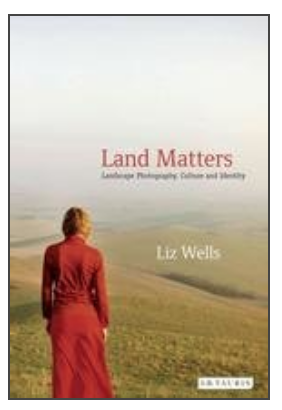 ISBN: 9780857720351 Published; 30 July, 2011 352 pages. Source; Library E-book- Red Online. https://www-dawsonera-com.glos.idm.oclc.org/abstract/9780857720351 In this major work on landscape photography, extensively illustrated in colour and black & white, Liz Wells is concerned with the ways in which photographers engage with issues about land, its representation and idealisation. She demonstrates how the visual interpretation of land as landscape reflects and reinforces contemporary political, social and environmental attitudes. She also asks what is at stake in landscape photography now through placing critical appraisal of key examples of work by photographers working in, for example, the USA, in Europe, Scandinavia and Baltic areas, within broader art historical and political concerns. This illuminating book will interest readers in photography and media, geography, art history and travel, as well as those concerned with environmental issues. - https://www-dawsonera-com.glos.idm.oclc.org/abstract/9780857720351
With in the final book there is poetic writing. involving myself with poets and rappers I became very influenced by the words of music. As well as current hip hop I also listen to classic Bob Dylan, The Beatles, Led Zeppelin, Ray Davies and many many more. I have tried to use a bit of poetic writing in my book, to get across and to anchor the images to a story, to a subjective emotion, to an expression of experience. The writing is an experiment to see how well I can put words to images really. The meaning comes from the artists perspective, I hope I have got across the transition from chaos to order, from weak to strong, from dark to light etc. unsustainable to sustainable. I will use this project in the future no doubt to look back at what I touched up on in my life and what I really am interested in and how to get there. This work is also a goal that can't be achieved but it can be felt and connected to in certain times of experience.
http://uk.phaidon.com/agenda/art/articles/2016/july/12/how-lucas-samaras-manipulated-the-polaroid-age/ Lucas is known for manipulating the polaroid age, finding new ways of manipulating images taken on polaroid in the early 70's using a transfer technique, Lucas mess around with the chemicals which were found out to stay maluable for 24 hours, but polaroid quickly corrected this. to create distort colours, distorted shapes and abstract reality.  was a Dutch Post-Impressionist painter who is among the most famous and influential figures in the history of Western art. In just over a decade he created about 2,100 artworks, including around 860 oil paintings, most of them in the last two years of his life. They include landscapes, still lifes, portraits and self-portraits, and are characterised by bold colours and dramatic, impulsive and expressive brushwork that contributed to the foundations of modern art. His suicide at 37 followed years of mental illness and poverty.
https://en.wikipedia.org/wiki/Vincent_van_Gogh http://www.patricksaad.com/troubadours/ This artists takes polaroids of people and paints on top after. To me this creates an impressionist style which is similar to Vincent Van Gough. The background is a strange tone which looks like a reflective surface, like this man is crouching in water or energy. The image is very well balance between lightness and darkness.
http://www.ellencareyphotography.com/ellen-carey/painted-color-photos/0xz9nvws224tefoxxotyytnyv4a2kn
http://www.ellencareyphotography.com/s/Artist_Statement_2012_complete.pdf Ellen Carey (b.1952 USA) is an educator, independent scholar, guest curator, photographer and lens-based artist, whose unique experimental work (1976-2015) spans several decades. Her early work Painted Self-Portraits (1978) were first exhibited at Hallwalls, an artists-run alternative space, home to the Buffalo avant-garde — Robert Longo and Cindy Sherman — and led to a group exhibit The Altered Image at PS 1, another avant-garde institution. The visionary curator, Linda Cathcart, of The Albright-Knox Art Gallery (AKAG) selected Carey’s work for this exhibition as well as The Heroic Figurewhich presented thirteen American artists for the São Paulo Biennale including Cindy Sherman, Nancy Dwyer, Julian Schnabel and David Salle, with portraits by Robert Mapplethorpe, for its South and North American tour (1984-1986). In 1983, The Polaroid Artists Support Program invited Carey to work at the Polaroid 20 X 24 Studio. Her Neo-Geo, post-psychedelic Self-Portraits (1984-87) were created, quickly followed by her stacked photo-installations Abstractions (1988-95). Her pioneering breakthrough the Pull (1996) and Rollback (1997) name her practice Photography Degree Zero (1996-2011). Here, she investigates minimal and abstract images with Polaroid instant technology partnered with her innovovative concepts, often using only light, photography’s indexical, or none, emphasizing zero. Her photogram work is cameraless; it parallels her Polaroid less-is-more aesthetic under her umbrella concept Struck by Light (1992-2015). Carey has worked in a variety of cameras and formats: Polaroid SX-70 and Polaroid PN film; black/white to color; 35mm, medium, and large format. Her experimental images, in a range of genres and themes, are one-of-a-kind. Peter Beard was born in New York City in 1938. A childhood obsession with nature blossomed during summers spent in Tuxedo Park with his grandmother who gave him his first camera. Taking pictures became a natural extension of the way he already preserved his memories in meticulously crafted diaries. At seventeen he went on a life-changing trip to Africa with Quentin Keynes, the explorer and great grandson of Charles Darwin, working on a film documenting rare wildlife including the white and black rhinos of Zululand. Beard entered Yale as a pre-med student and in a class on population dynamics he formed his enduring hypothesis that humans are, in fact, the main disease. He switched his focus to art and began studying under Vincent Scully, Joseph Albers, and Richard Lindner. Beard’s insatiable desire to explore lured him back to Africa, and in lieu of completing his senior thesis at school, he mailed in his diaries from Kenya. His journals continue to be an essential part of his artistic output. In the 60s Beard received a special dispensation from President Kenyatta to purchase Hog Ranch in Kenya with the mandate that he film, photograph, write, and document the local flora, fauna, and peoples. Beard worked in Tsavo National Park documenting the imbalance between the people, the land, and the animals for his book The End of the Game (1965). In Beard’s second iteration of The End of the Game (1977) he documented a massive population die-off in Tsavo of 35,000 elephants and 5,000 rhinos as the animals succumbed to starvation and stress and density related diseases. Throughout his travels and career Beard has befriended and collaborated with artists including Andy Warhol, Francis Bacon, Salvador Dali, Richard Lindner, Terry Southern, and Truman Capote. He continues to live and work between New York City, Montauk, and Kenya with his wife, Nejma, and daughter, Zara. http://peterbeard.com/the-artist/ Beards visual representations are not only photographs but they have been juxtaposed with blood, writing, frames and other objects. To what i think is to represent the killing of a habitat, of a tribe, a civilisation. It is very dark imagery and makes a statement on humanity as a whole. Peter has a lot of work just like this that is very interesting. Thinking humans are the disease, we have blood on our hands everywhere we go, but on the other side of the coin, we have invented tools and ways of sustaining our destructiveness and recording it in images and art like this.
I have uploaded my E-book online via Issuue. Check it out here.
For me to really, really have a positive impact in the world, to get to the places I can see, the best ideal of myself, then I have to confront the most evil parts of me, figure out what it is that makes me up as a human, If I understand my mind then I can understand others too. At least its a good place to start. This has become evident after making this project and researching all I have, I can speak to people on this level that is self help, that is constructive in the positive aspect on life, at any level I actually have things to say that can wake people up to things in their lives too and to me that is beautiful, to me that is what art is for, that is why I create and I only wish to inspire my generation to become faithful in their own lives and with the world.
Being as truthful to yourself and to others is the reality of positivity. A body of work that represents my subjective experience through photography and painting, in relation it a community context. What you do in life chooses you, you can choose not to do it, to do something safer. your vocation chooses you- Jim Carey. You can tell what I love from the colour in some of my images, you can tell my inner life from the darkness in some images, you can tell what I want from the brightness in some, the freedom of the technique. As an artist I make models of my life, to bring ideas into being. To plant seeds in the brightest forests, to make myself seen and feel accepted in such a chaotic world of possibility. The root of my being is love, I love the freedom of this work, no one tells me what I can or can’t do, just hoping that someone will relate to it. you can find every race in the face of jesus. and that is how everyone imagines jesus, in their own image. my room was heaven to me, where the magic happens my isolation was welcome. This project was also the result of many paths lining up in my life, journeying across many styles and environments of documentary photography, encountering big challenges and big rewards. Using painting to help me order and to articulate my life experience in the most free, natural way, painting my mind, in combination with photography allows me to turn any negativity in my life, usually things that challenge me subjectively, into a positive outcome, into more creation and art that expresses human experience the most fluid way for me. For it was to realise that you rely on the negativity, the chaos in the background of everything, to have a point of reference to order and orient your life from in the world. The unknown, this landscape of infinite possibility is all out there waiting to be interacted with, its about choosing the paths that will irradiate as much suffering in your life and those around you. Bringing everybody up with you. To create a more connected society in which its aware of it roots reaching into the depths of hell but also realising its branches reach into the height of the heavens also. Its not just a finished book, but a finished chapter in my life experience, also the start of something even bigger, something new again. With all other previous information of my documentary photography and painting implicit after this work, my work can only get stronger and I can assign more meaning to imagery, weather it be portraiture, social documentary, self portrait, painting... Finishing and getting to the end of this idea made me realise how deep you can go, how deep you have to go to get to the truth of your life experience, I feel there is no depth to how deep it really goes, but you have to be careful, you have to come back at the right times and say what is relevant or you will seem like a crazy mfkr and genuinely get lost in the chaotic nature of everything else going on, not only your life but in the world as a whole.
In the totality of this project its about realising we get lost, realising we are capable of very dark scary things and coming through the other side, the positive aspect of it, and overcoming those fears and confrontations which we want to hide from, which we say are not real because science can not prove it. (this is the illusion of objectivity) This project is looking myself in the eyes and asking myself what I really want to see in the world, what I know is possible and well now I know there is impossible things that can be made possible, the sky really is the limit and the only thing that will stop me expressing human experience subjectively is a project that looks at the other end of it. I really did turn that negativity in my life around into positivity, with the help of the community, I must mention Louis Parsons the great mind who helped me direct some ideas, the person who gave up his life experience and time to help me out, he lost out on hundreds of pounds in painting time but gave something more important than anyone has ever done before, a whole insight into life, an understanding of the mind, in an artistic context, he gave away his whole path of success to me, he didn't hide anything. This really is important to me, knowing that I met him one day by confronting a fear of knocking on some random guys door to chat about art. Its important because this project confronted me every time I write about it, struggling to know what to say about myself or my mind, its important because I saw it through to the end, and on a personal level it fucking ripped me to pieces at every level, from people discrediting the work to my own disbelief. I now know why I really made the work and can actually use this to help people improve their lives too. starting with the people around me, my friends and family, eventually the world Im operating in WILL line up with good experiences just has it has done since, only this time I really understand the messages and metaphors of life and can add to the story telling of the human experience. A self published book. The title of my book is The Subjective Self. Blurb design, I don't have Indesign at the moment as I used up my trial and I don't have the income for some expensive software. I will use what is practical fast and the exact same thing just less complicated. I will not be looking at the dimensions of the images down to every milli meter or the coding of the text, the coding of the layout. I understand how to use it from first year and made many books using the software when I had the time and university was open for me to access it. working at night I find it hard to do this and specifically for this project the concept is 95% of the work. It has taken me fking months and months to get to where I am now with what the subjective experience is. I have been making books on every project I have done at uni so far and have a very good know how of how they are put together and what makes them work best. If i really really wanted to publish a book for income then it would be worth getting the software for it, but at this stage it will be too time consuming on something that in reality, should only take a few weeks. I also made physical books, this took out the digitalisation of the image and kept the aura behind the work. As i mention about Walter Benjamin at some point in this blog, it is the physicality that makes it. If anything using the physical art works would be the best thing to do. So I created the layout using the actual images in a book then digitised it all and put it through blurb. My indesign was the physical book, the actual visualisation, making it easier ad more coherent with the interaction of images to place them appropriately. If i was to digitalise the work then blurb is perfect. The layout of the first book was shit. I put the negatives next to the positives and gave it all away, this distracted from the actual content and the meaning of each image. I started the book with scenes of this subjective landscape, a soulscape if you get it. then the images get closer and closer to the self and identity. throughout the book I start putting self portraits in, after a few days of constantly looking and seeing what works I changed around the images, took loads out, using the physical book as my template then move on to the digital blurb on . Eventually I edited down from neally 200 images to about 28 and they were all self portraits with a few details at the beginning..
Kandinsky- Complete writings on art- page 152- 155. Spiritual pyramid…
Noam Chomsky - Mathematics, Language, and Abstract Objects- https://www.youtube.com/watch?v=atupfHizJxM Abstraction In Photography - https://www.youtube.com/watch?v=CODdp5UPfMA Jordan Peterson - You Can't Control Who You Really Are - NEW https://www.youtube.com/watch?v=MyBGzI0x8us Nietzsche- God Is Dead, The Gay Science (Sections 108, 125 and 343) http://www.philosophy-index.com/nietzsche/god-is-dead/ https://www.youtube.com/watch?v=mNhGyKu8Ks8 PBS American Photography 1/3 https://www.youtube.com/watch?v=aulz5efN2Pc William Eugene Smith: Photography Made Difficult, 1989, Full Length https://www.saybrook.edu/blog/2011/07/21/07-21-11/ Magnum Photos- The Changing Of A Myth. https://www.youtube.com/watch?v=AOHmvL5KeXw&list=PLT6cZ7ZOJtoPwugkh8hXWQKHsTcLVRPB5&index=18 Cindy Sherman- Nobody's Here But Me. https://www.youtube.com/watch?v=UXKNuWtXZ_U&list=PLT6cZ7ZOJtoPwugkh8hXWQKHsTcLVRPB5&index=9 The Many Lives of William Klein. https://www.youtube.com/watch?v=JnN9LMvjM7Y&list=PLT6cZ7ZOJtoPwugkh8hXWQKHsTcLVRPB5&index=8 Edward Burtynsky: Manufactured landscapes https://www.youtube.com/watch?v=U2Dd4k63-zM&index=4&list=PLT6cZ7ZOJtoPwugkh8hXWQKHsTcLVRPB5 Looking at Ansel Adams: The Photographs and the Man https://www.youtube.com/watch?v=itVRc4MwFyI&index=2&list=PLT6cZ7ZOJtoPwugkh8hXWQKHsTcLVRPB5 Vivian Maier, short Doc. https://www.youtube.com/watch?v=vDewAU-rgIM&index=21&list=PLT6cZ7ZOJtoPwugkh8hXWQKHsTcLVRPB5 |
|
||||||||||||||||||||||||||||||||||||||||||||||||














